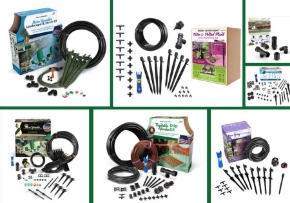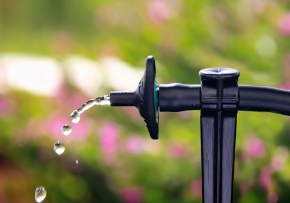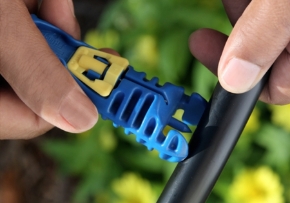Take a look at the U.S. Drought Map below. It is easy to see that much of the country is currently experiencing some kind of drought condition. In certain areas the conditions are mild, and in some of them things are more extreme and unusual. The map above shows the parts of the country that are experiencing water shortages as of May 1st of this year.
If you find yourself in one of these areas, what can you do to compensate for the lack of water, while continuing to keep your plants, not only alive but healthy and thriving?
Below we have a simple list of things that will help any garden or landscape thrive in a less-than-adequate watering environment.
- Use correct watering techniques: Water early in the day or late in the evening to reduce evaporation loss. Water less frequently, but for longer lengths of time, to encourage deep root growth. Check hoses for leaks before watering plants, and position sprinklers so they water only plants -- not the road or house. Some simple adjustments can save water and reduce runoff.
- Condition the soil: If you add organic matter to clay and sandy soils, it will increase the penetrability of clay soils and the water-holding capacity of sandy soils.
- Mulch the soil surface: This helps cut down on water loss due to evaporation. A two-inch layer of mulch or compost is recommended. Apply mulches to shrubs, trees, annuals, vegetable gardens and even containers.
- Collect compost for mulching: Use food scraps, yard trimmings, and other organic waste to create a compost pile. Compost is a rich soil amendment that can help increase water retention, decrease erosion and replace chemical fertilizers.
- Shelter container plants to conserve water: Move your container plants to areas with partial shade to keep them from drying quickly in hot windy areas.
- Install a drip irrigation or micro irrigation system: A low-flow irrigation system can save up to 70 percent of all water used in garden care, making it a feasible way to water in drought conditions. Also many areas allow low-flow irrigation in gardens and landscapes even when there are watering restrictions.
- Discourage competition: Pull any weeds to discourage competition for water. Consider a landscape fabric between the soil and your mulch to further reduce weeds.
- Use rain barrels to collect rainwater: By using rain barrels to collect water you can eliminate the need to suck up water from your utility, but rather use what nature has given to keep your plants thriving when rain is more scarce.
If you do all of these things, it will have an impact on your garden and landscape. It will also help when the rain is not falling quite as much as you need it too.














